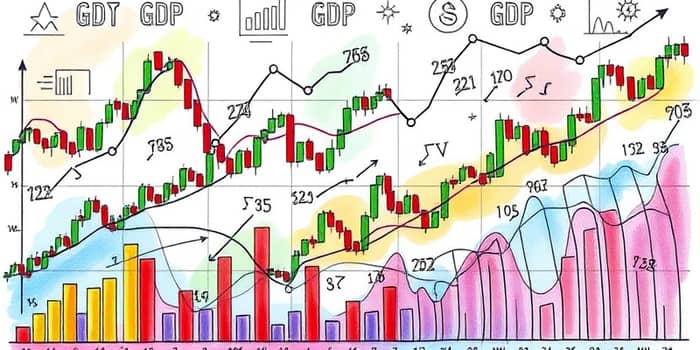
In an era of rapid data flow and economic shifts, investors and traders need a clear roadmap for interpreting market signals. By combining technical patterns, macroeconomic trends, and sentiment gauges, you can build a holistic view of where markets may head next. This article unpacks the most essential indicators and offers practical steps to stay ahead of the curve in 2025.
Market signals fall into three primary buckets that each reveal different facets of price action and risk:
Each category provides unique insight. Technical signals often highlight price momentum and trend direction, macro data informs the broader backdrop, and sentiment measures capture the collective mood of participants.
Moving averages smooth fluctuations and highlight trend shifts. A golden cross and death cross—the 50-day crossing the 200-day SMA—can signal major bullish or bearish turns. In 2025, watch these crossovers closely around major support and resistance levels to anticipate extended moves.
Momentum oscillators like RSI and MACD measure the speed of price changes. An RSI reading above 70 often signals overbought or oversold conditions, while readings below 30 flag potential rebounds. MACD crossovers and divergences can preempt reversals when price makes new highs or lows without confirmation from the oscillator.
Volatility indicators such as Bollinger Bands and Average True Range highlight the scope of price swings. A sudden break outside the bands or an ATR spike often indicates volatility and large price moves ahead. Confirm these signals with volume to improve reliability.
Volume-based tools like On-Balance Volume and the Accumulation/Distribution line validate moves. When price trends align with rising OBV, it confirms strength. Sudden volume spikes during breakouts can indicate institutional interest and mark key breakout confirmation levels.
The macro backdrop remains crucial for understanding market context. In 2025, slowing growth and evolving policy will shape risk assets and bond yields.
GDP is projected to decelerate to 1.5%, keeping growth investors cautious. Treasury yields may trade in a wide 4.25% to 5% corridor as Fed rate cuts are anticipated later in the year. Housing markets show moderate gains, but rising rates and tariffs could temper momentum.
The Leading Economic Index fell 1% in April, marking its sixth negative month. Most components—especially consumer expectations and building permits—remain weak. Monitoring LEI trends can help you spot macro inflection points before broader market declines.
Sentiment gauges capture the emotional tilt of the market. Consumer confidence surveys, business sentiment indexes, and social media metrics can shift quickly and drive short-term reversals. A sudden spike in bearish news headlines paired with rising volume often marks a capitulation low.
Volume analysis acts as a bridge between technical and sentiment signals. When sentiment turns negative but price holds key support on high volume, it suggests that selling exhaustion may be near. Conversely, bullish hype with low volume can signal a lack of conviction.
By tracking these seven signal categories in tandem, you can develop a comprehensive view of market dynamics. Cross-reference technical breakouts with macro releases and sentiment shifts to filter noise from lasting trends. Combine multiple tools for confirmation whenever possible to reduce false signals.
No single indicator is infallible. Lagging tools like moving averages may provide delayed warnings, while leading indicators can generate false alarms. Always view technical signals within the macroeconomic context and guard against overreliance on any single data point.
Event-driven shocks—such as surprise tariff hikes or unexpected Fed commentary—can overturn prevailing signals in an instant. Maintain a flexible plan, set clear risk parameters, and be prepared to adjust your strategy when the environment shifts.
Decoding market signals requires both analytical rigor and adaptive intuition. By blending technical analysis, macroeconomic context, and sentiment gauges, you can build a resilient framework that adapts to changing conditions. Stay disciplined, use clear risk management, and continually refine your approach with new data and insights.
Armed with these tools and perspectives, you’ll be well-positioned to identify opportunity, manage risk, and navigate the complexities of markets in 2025 and beyond.
References













